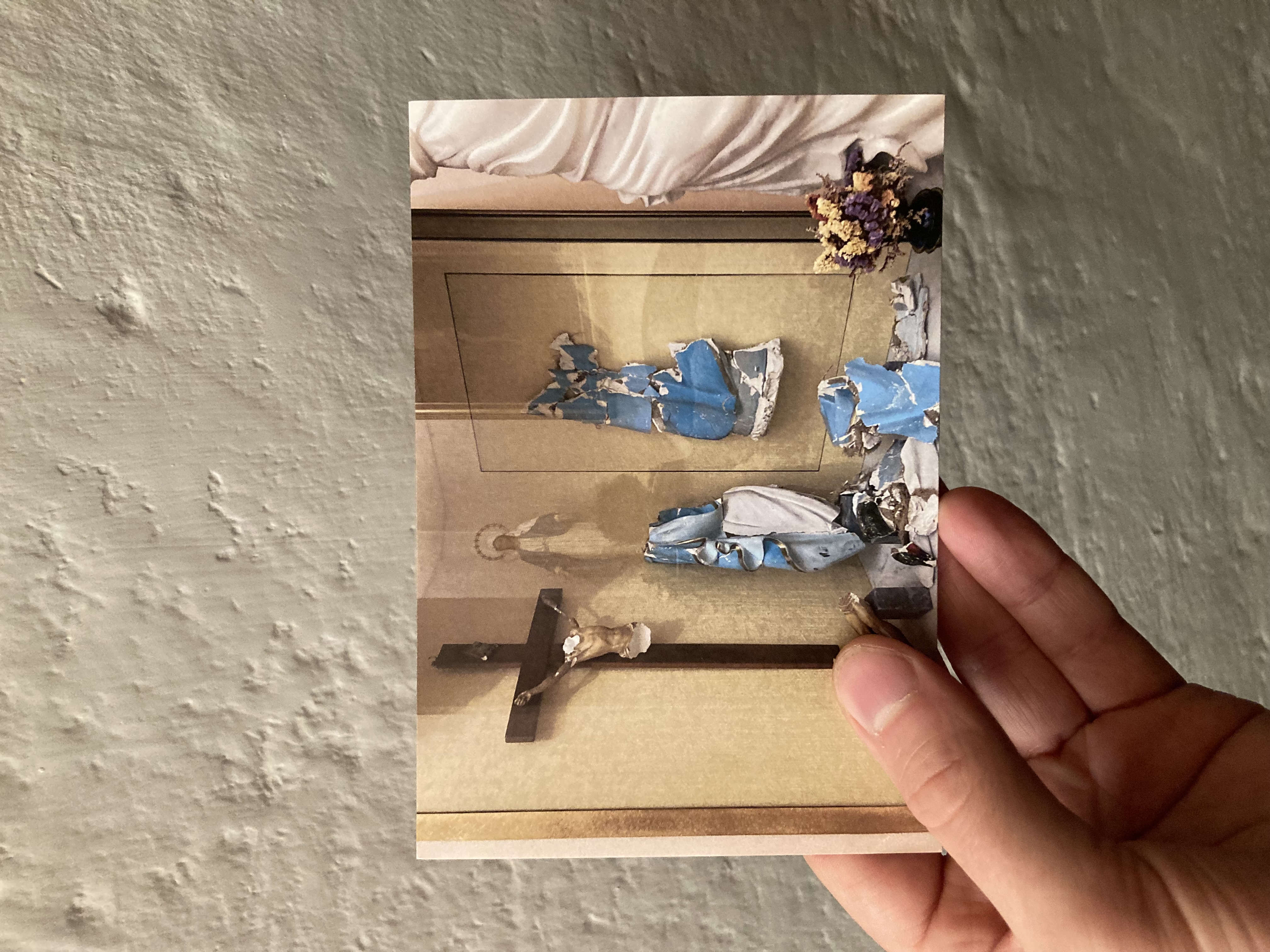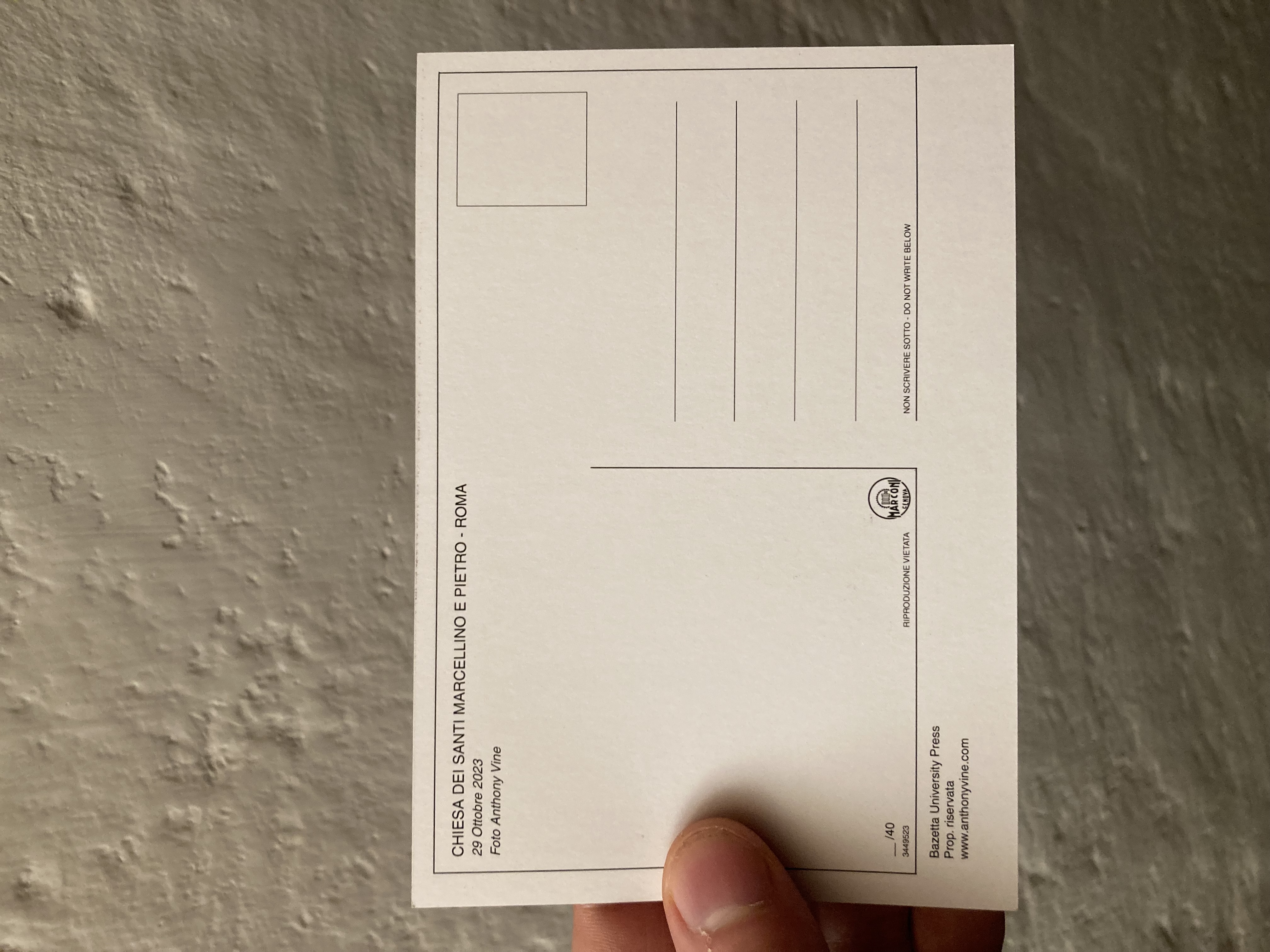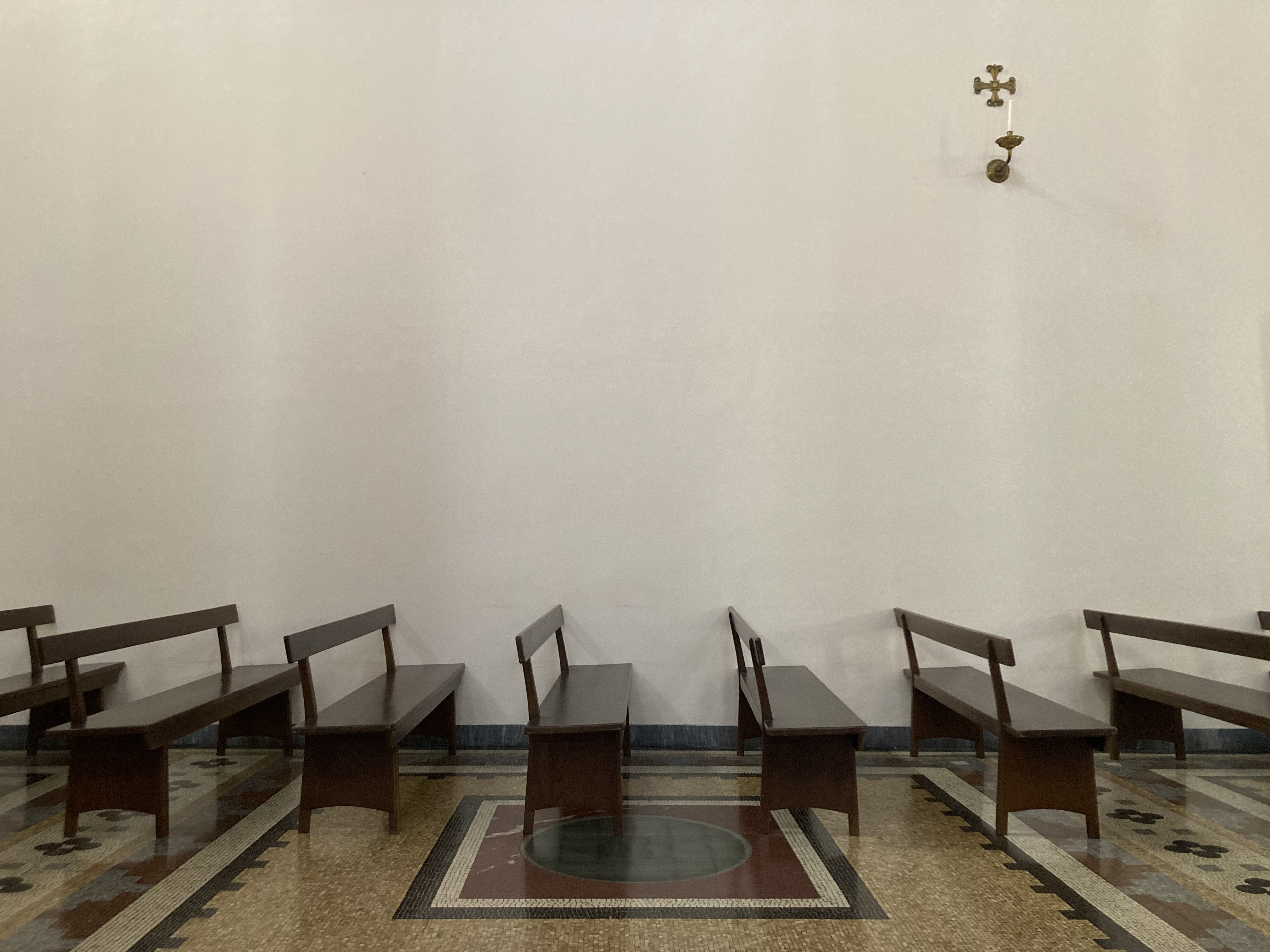
Visiting Hours / 2023
installation
audio︎
photos︎
two-channel audio recordings
single-channel digital video
varnished postcards
pamphlets
"Visiting Hours" was created with the generous support of The American Academy in Rome.
Sound
I stepped into San Giovanni della Pigna, an unassuming baroque church situated along the arterial streets near the Pantheon. Inside, looking at the gold adornments, striated marble, and shadowy frescoes a sort of double vision set in, causing everything to lose hold of its particularity and tumble into a blur of amber. From these walls, the sound of singing began to emerge. A recording of lugubrious liturgical chant was playing softly from white cylindrical speakers mounted in the marble. But instead of being sung, the chant line was played on flute, accompanied by a delicately strummed harp, and wrapped in a velvety synth pad, accentuating the candle lit mystique of the church.
The primary aim of the music, it seemed, was to calm and comfort. Barely audible sacred sounds blanketed the austere emptiness of the church with an easygoing sheen, giving those who came to pray or look around the illusory feeling that someone or something was there.
Wistful and tender, stripped of voice and sacred texts, the background music of San Giovanni della Pigna seemed to symbolize a lost sonorous past. The modern packaging of digital keyboards and computer sounds, and New Age expressions bridged the distant devotional past with our present. This sonorous world of reverent worship was synthetic and idealized yet rooted in something real. These looped recordings of gentle music echoed a time when the Liturgy of the Hours was incanted day and night, a time when churches sounded ceaselessly.
The background music of the church also seemed to point to the future. The music was like an underpainting, a grisaille of wordless and voiceless melodic contours that would be "filled in" during the services to come. Background music helps us with waiting for the future, in elevators, grocery store queues, and here, for the liturgy, which in the Middle Ages was thought to be a moment of God’s literal arrival. Visiting hours, it reminds us, are liminal worlds.
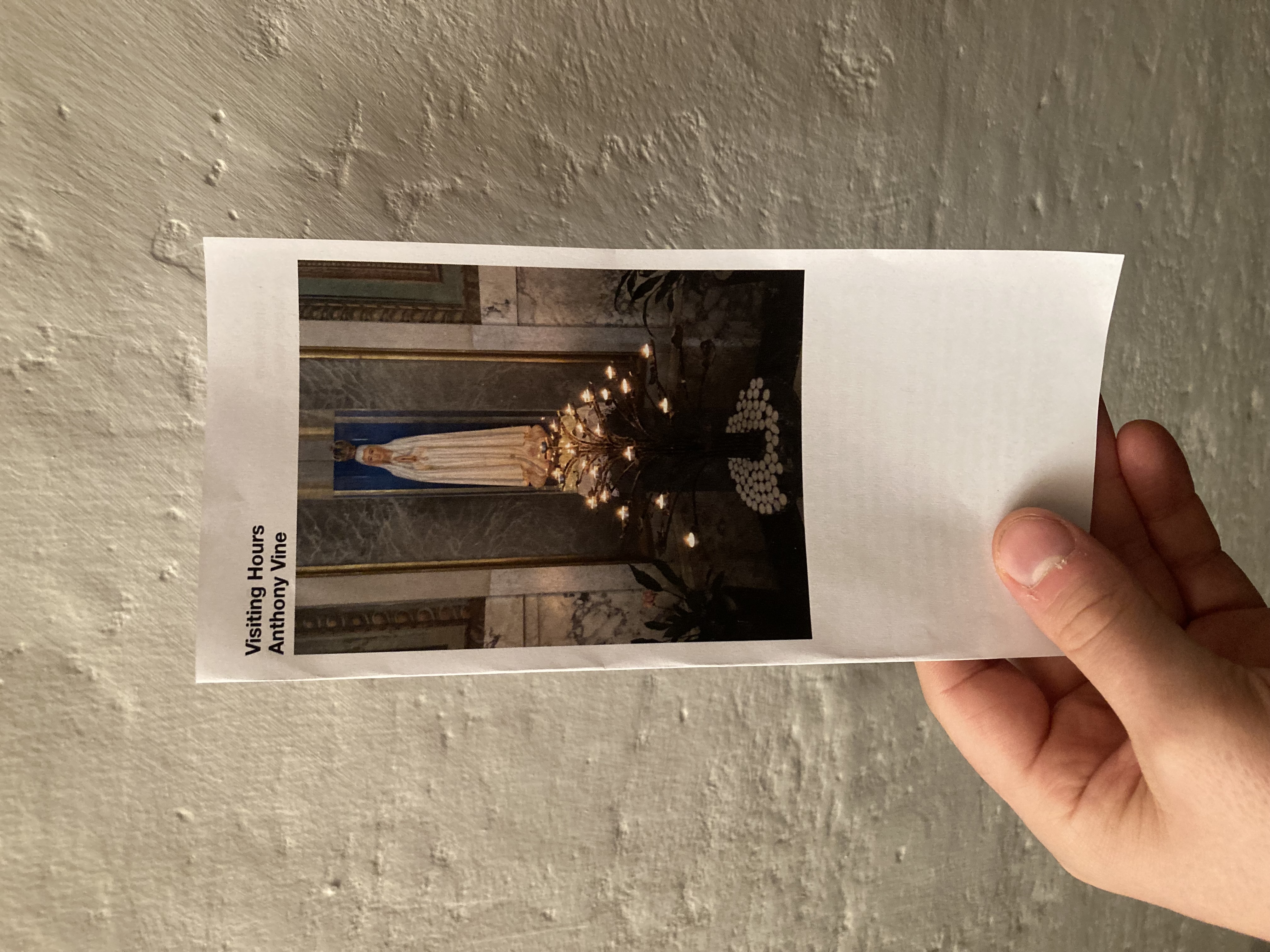
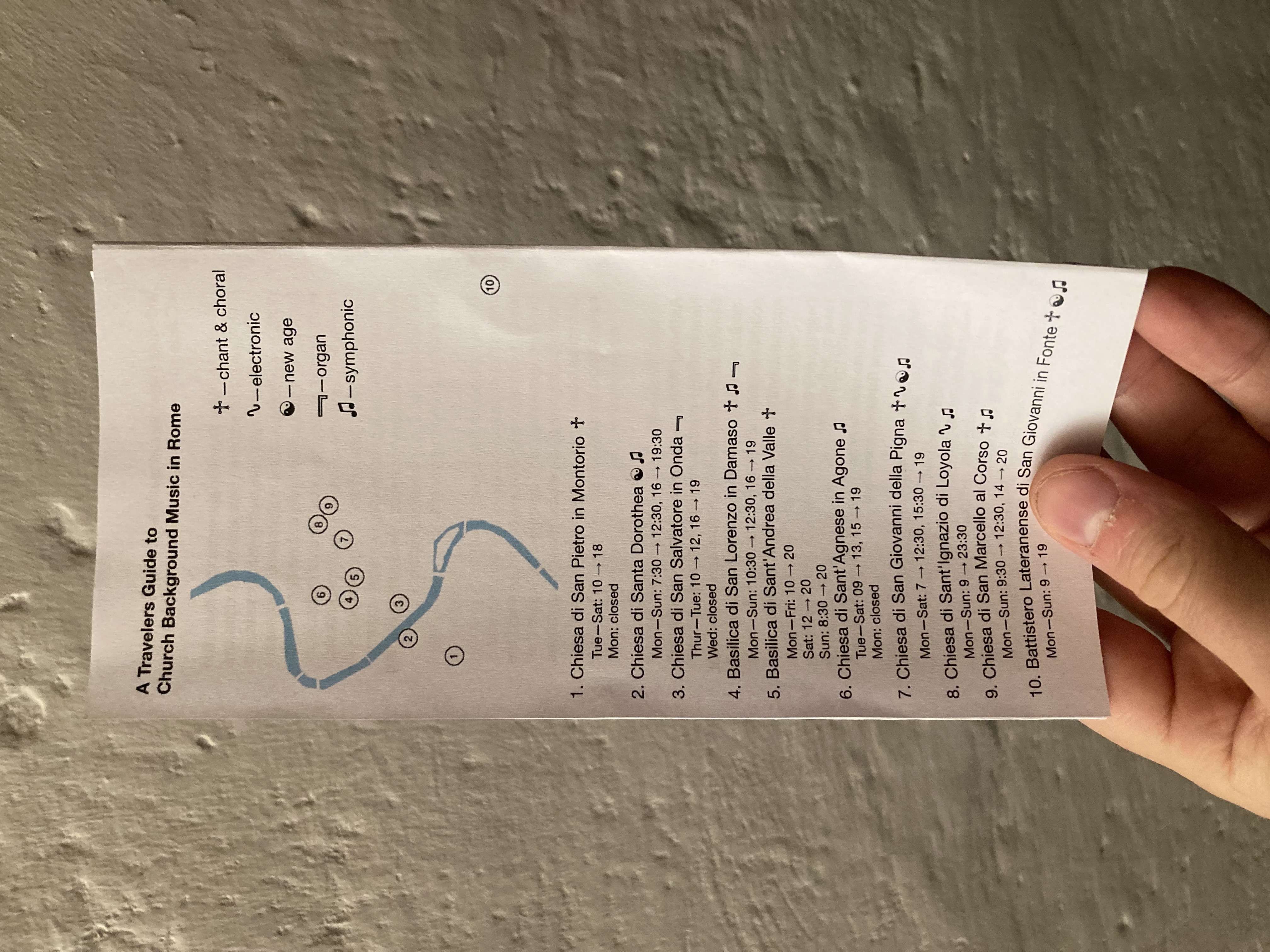
Light
Inside Chiesa del Gesù, the mother church of the Jesuit order, stands an oil lamp. It is placed at the tomb of Pedro Arrupe, a renown former Superior General. Oil lamps play important roles in burial and memorial customs. Lighted lamps and candles are conduits for transcending time, symbolizing the eternal spirit of humans and gods, and prolonging the prayers and devotions said over them for as long as the flame burns.
Fittingly, a kneeler for prayer is positioned near the oil lamp in the chapel of Pedro Arrupe. Filming the lamp from the kneeler, my phone clasped between my outstretched hands, I notice the oil lamp is doubly lit by a small LED lamp. Maybe it’s merely a garish design choice. But it also bolsters the containment, control, and constancy of this funerary light. In the prayer position, however, both light sources appear to flicker, my hands too; everything comes into humble alignment.
Image
B.N. Marconi provides "holy printing" services. Many of the postcards, leaflets, calendars, holy cards, and other printed matter found in the gift shops of Roman churches are produced at their facility in Genova. The photographs they shoot for churches are fortuitously in alignment with recent aesthetic trends. Moody rooms, flooded with direct flash, could easily be the backdrop for a Celine ad.
I asked B.N. Marconi to make postcards from the photographs I had taken on my visits to churches in Rome. The images, like background music, are peripheral subjects. It's a collection of glimpses from under altars, in dormant niches, and inside entryways. An inscrutable beauty lies in this inbetweenness, where little is defined, finished, polished, or considered. Here, in these margins, waiting emerges again: an empty bulletin board awaiting an announcement, a veiled statue waiting for its feast day, a confessor anticipating reconciliation and forgiveness.
These motifs, not fully realized, some unintentional, reveal fundamental impulses and feelings of the church that are buried beneath the overwrought marble and adornments, inside the carefully programmed ceremonies and narratives. Churches seem to speak more easefully and earnestly on the periphery.
